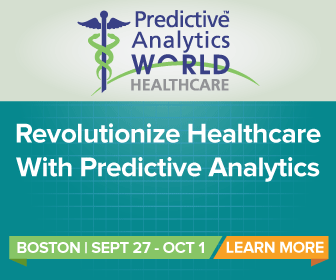In the move to take healthcare to the next level, no conversation would be complete without a discussion on the impact of big data. With so many hospitals and health institutions using electronic medical records now, the amount of data being collected on patients has reached record numbers. Hospitals are well aware of the importance of big data and how it can help in the prevention and treatment of diseases and other health problems. As vital as big data has become in just the past few years, many experts believe healthcare can take an even bigger step forward. This one involves the Internet of Things (IoT), which essentially works by connecting everyday objects to the web, allowing for greater interaction between users and items. With the IoT and big data working hand in hand, healthcare has the potential to improve at a greater pace than it ever has before. It’s a revolutionary change that many within the industry see as a pivotal sign of progress.

This prevention effort is getting a massive boost thanks to the Internet of Things. More specifically, wearable devices have proven to be a major benefit when it comes to monitoring people’s health and tracking health data. Perhaps this shouldn’t be a surprise, especially with the popularity of health wearables like Fitbit and Jawbone. These and many other wearable devices can help users keep a closer eye on their health while tracking their progress in reaching clear health goals. That’s what many wearables are being used for now, but in the future, the full potential of these devices could be unleashed. Imagine wearable technology that’s even less intrusive, such as sensors built directly into your clothes. Then imagine if all that data was shared with your doctor or other health professionals, alerting them if certain warning signs for health problems were detected, even if those problems wouldn’t fully manifest themselves until years later. This use of wearables and the IoT even has its own nickname, the Internet of Healthy Things.
Prevention isn’t the only area where big data and the IoT can play big roles in the advancement of healthcare. Based off the deeper insight generated by IoT devices, doctors can prescribe treatments that are tailored to the individual patient. Big data can be used to predict what the outcomes of treatment options will be for patients and determine which one is best for the individual. Factors like personal history, previous health problems, and genetic data go into the decision, giving doctors a complete picture of the patient and what treatment would be best for him or her.
This excerpt is from the SmartDataCollective. To view the whole article click here.
Jared Jaureguy
Husband, father, son, technology consultant. I write for many of the top tech blogs. I tweet all things related to the tech industry. Every once and awhile I’ll write for Dell.